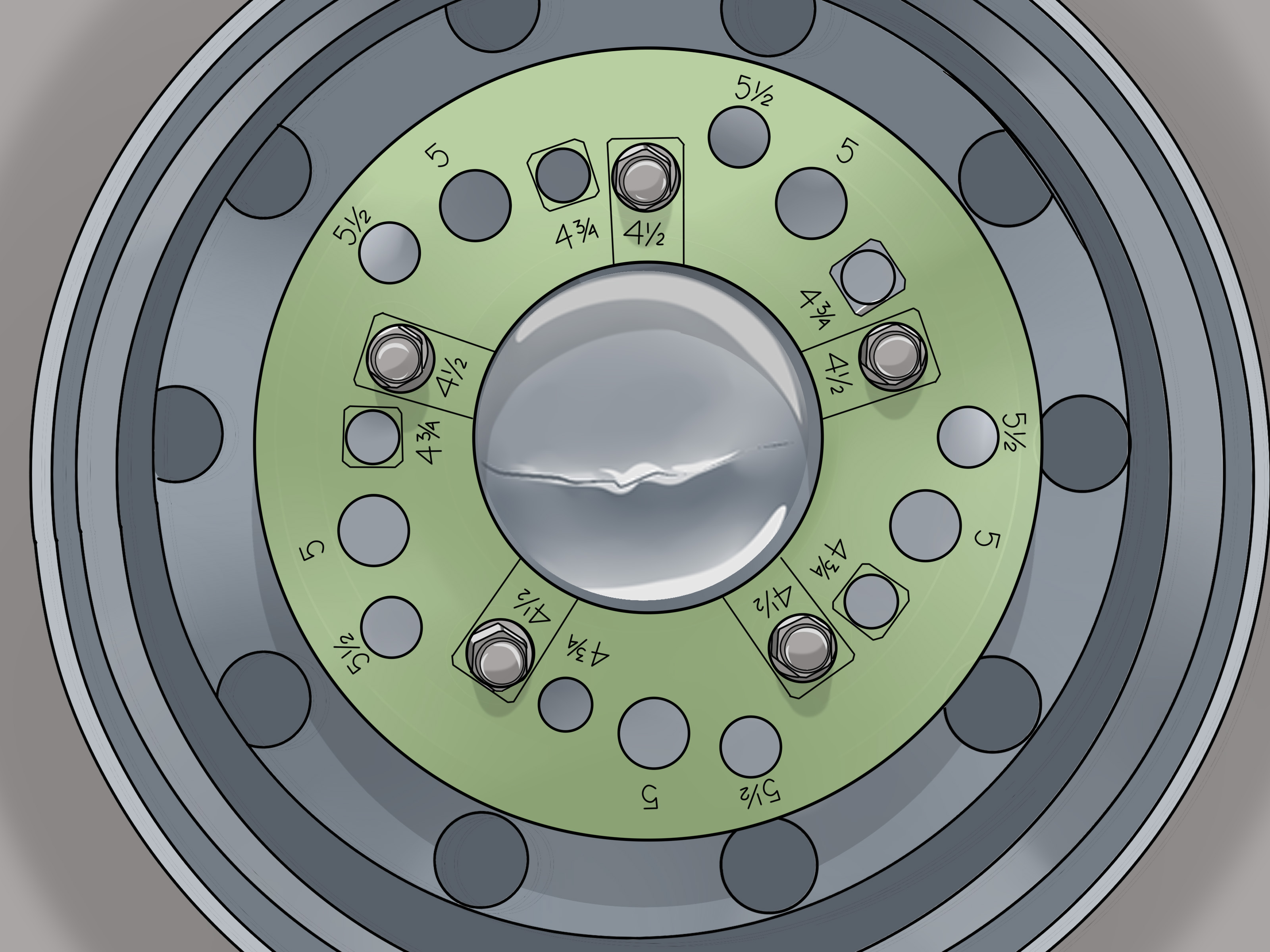Mastering Wheel Fitment: How to Read Bolt Patterns on Rims
Ever wondered about those mysterious numbers stamped on the back of your car's rims? They're not just random digits. They represent the bolt pattern, a crucial piece of information for anyone looking to replace or upgrade their wheels. Understanding how to interpret this pattern is essential for ensuring a safe and proper fit.
Knowing your rim's bolt pattern is paramount for proper wheel installation. An incorrect bolt pattern can lead to dangerous driving conditions, as the wheel may not sit flush against the hub, causing vibrations, loosening, or even detachment. This guide will walk you through the process of deciphering the bolt pattern on your rims, empowering you to choose compatible wheels with confidence.
The bolt pattern, also known as the lug pattern, is essentially a numerical representation of the arrangement of the lug holes on a wheel. It's expressed in two numbers separated by a letter "x." The first number indicates the number of lug holes, while the second represents the diameter of the circle formed by the center of those lug holes, also known as the pitch circle diameter (PCD). For example, a bolt pattern of 5x114.3 signifies five lug holes with a PCD of 114.3 millimeters.
Determining the bolt pattern of your rims isn't rocket science. For wheels with an even number of lugs (like 4 or 6), simply measure the distance between the center of one lug hole to the center of the directly opposite lug hole. This measurement is your PCD. For wheels with an odd number of lugs (like 5), the process is a little trickier, requiring measurement from the back of one lug hole to the center of the opposite lug hole. Several online calculators and mobile apps can assist in determining the PCD for odd-numbered lug patterns based on this measurement. Always double-check your measurements and consult reliable resources for accurate readings.
The history of bolt patterns is intertwined with the evolution of automotive wheel technology. As vehicles and their wheels became more sophisticated, standardized bolt patterns emerged to ensure compatibility and interchangeability. The importance of accurately identifying the bolt pattern cannot be overstated. It's the foundation of safe and proper wheel fitment, preventing potential hazards and ensuring optimal vehicle performance.
One of the main issues associated with incorrectly reading the bolt pattern is the risk of purchasing incompatible wheels. This can lead to wasted time and money, as well as the potential for serious safety issues if the incorrect wheels are installed.
Benefits of Knowing How to Read Bolt Patterns:
1. Safe Wheel Installation: Ensures proper fitment, preventing wheel detachment and accidents.
2. Informed Wheel Purchases: Allows you to confidently select compatible aftermarket wheels, expanding your customization options.
3. Troubleshooting Wheel Issues: Aids in diagnosing vibrations or other problems potentially caused by incorrect bolt patterns.
Step-by-Step Guide to Reading Bolt Patterns:
1. Count the number of lug holes.
2. Measure the PCD (see explanation above).
3. Express the bolt pattern as "Number of lugs"x"PCD".
Advantages and Disadvantages of Knowing How to Read Bolt Patterns
| Advantages | Disadvantages |
|---|---|
| Ensures safety | Requires some effort to learn |
| Saves time and money | Measurements can be tricky for odd-numbered lug patterns |
Best Practices:
1. Always double-check your measurements.
2. Consult reputable resources for confirmation.
3. Use a caliper for accurate measurements.
4. Refer to your vehicle's owner's manual for the recommended bolt pattern.
5. Seek professional assistance if unsure.
FAQs:
1. What does PCD stand for? Pitch Circle Diameter.
2. Can I use wheels with a different bolt pattern? No, it's unsafe.
3. Where can I find my car's bolt pattern? Owner's manual, online resources, or a tire shop.
4. What happens if I install the wrong bolt pattern? Wheel detachment, vibrations, damage to the vehicle.
5. Are there tools to help measure bolt patterns? Yes, calipers and online calculators.
6. Can I change my car's bolt pattern? Generally, no, without significant modifications.
7. Are all bolt patterns measured in millimeters? Most commonly, but some may be in inches.
8. Do I need to know the bolt pattern for winter tires? Yes, they must match your vehicle's bolt pattern.
Tips and Tricks: Clean the wheel hub face before taking measurements for accuracy. Take multiple measurements to ensure consistency.
Understanding how to read bolt patterns is a fundamental skill for any car owner. It empowers you to make informed decisions about wheel replacements and upgrades, ensuring both safety and proper fitment. By mastering this simple yet crucial aspect of wheel selection, you can avoid potential hazards and enhance your driving experience. Taking the time to accurately determine your vehicle's bolt pattern is a small investment that pays off significantly in terms of safety, performance, and peace of mind. Don't underestimate the importance of this seemingly small detail – it's a key component of responsible car ownership. So, the next time you're considering new wheels, remember the significance of the bolt pattern and take the necessary steps to ensure a perfect match. Your safety and driving experience depend on it. Now, go forth and confidently conquer the world of wheel fitment!
Conquering the road mastering ford super duty king ranch weight
Are you an empath decoding the tell tale signs
Unlocking the power of high flow vacuum pumps




